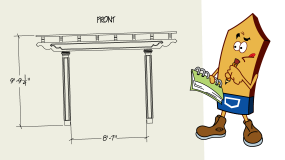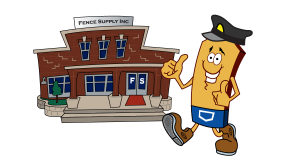An arbor or pergola is a common feature found in many gardens. These consist of wooden fences and arcs where vines are allowed to creep and grow. A fully-vined arbor or pergola forming into a long, stretched tunnel will offer welcome shade and privacy.
In order to protect your wooden arbor or pergola, you should stain the wood, not paint it. This will highlight the natural beauty of the wood. We recommend Baker’s Gray-Away products to stain your wood, using the following steps as guide:
Curing, cleaning, and preparation
New wood needs to cure, or weather, before stain is added. There are four different wood conditions that require specific cleaning, curing, and preparation before staining is done: new and untreated, new and pressure-treated, old and withered, and previously-stained wood.
The recommended weathering period for new and untreated wood is 4 to 6 weeks, while for new and pressure-treated wood, a period of 1 year is needed. Old and withered or previously-stained wood don’t need any curing since they have already been subjected to plenty of weathering.
You can clean new or old unstained wood by using either a percarbonate wood cleaner or sodium hydroxide, with cleaning pressure not exceeding 1500 psi. If you don’t have either of these cleaning agents, you may use a water and household bleach mixture at a ratio of 1:2. Make sure you wear the right protective clothing, because some of these chemicals are hazardous.
For previously-stained wood, you need to strip previous stains and sealers by using a wood stripper. Make sure you test whatever stripper you use on a small, unobtrusive section of your wood before cleaning it, to prevent discoloration and damage of your fence.
After cleaning, you must prepare your wood for staining by restoring its pH. Use acidic wood brightener for this purpose on any wood condition. The table below will serve as a useful guide for determining the curing, cleaning, and preparation requirement for your wood condition.
|
Wood Condition |
Weathering Period |
Cleaning Agent |
Cleaning Pressure |
pH Balancer |
|
New, untreated |
4-6 weeks |
Percarbonate or Sodium Hydroxide |
1500 psi max |
Acidic Brightener |
|
Pressure-treated |
1 year |
Percarbonate or Sodium Hydroxide |
1500 psi max |
Acidic Brightener |
|
Old, withered |
NA |
Percarbonate or Sodium Hydroxide |
1500 psi max |
Acidic Brightener |
|
Previously-stained |
NA |
Sodium Hydroxide Wood Stripper |
NA |
Acidic Brightener |
Properly mix stain and sealer products
Before applying the stain and sealer on wood, make sure that you properly mix it before using. Proper mixing will ensure that the stain and sealer will give maximum protection to your wood products and ensure good coloration.
Wood coating
Always apply 2 coats to the wood for the best results. You may use sprayer, brush, or rollers when applying wood stain. Apply a heavily-saturated first coat on the wood and allow the stain to penetrate until only a few or no wet areas are visible. Then apply a lighter second coat. Make sure that the second coating covers the entire surface of the wood. Then leave the wood untouched, allowing it to dry for 48 hours.
Keep the following in mind when staining and sealing your wood:
- When using a sprayer, make sure that the pressure does not exceed 1500 psi.
- When using a brush or roller, always work with the grain of the wood.
- Don’t allow long periods of time between coats. An average of 15 to 30 minutes and a maximum of 1 hour is the recommended time interval. Make sure you keep this in mind, especially if you’re using a brush or rollers, because these take longer to cover everything.
- For less absorbent wood (e.g. cedar), you need to wipe off excess stain after allowing the second coat to seep into the wood for 15 minutes.
- Don’t leave puddles, since they will reduce the quality of the coating. Coat out these puddles using a brush.
After you’ve followed these steps, sit back and wait for your vines to cover your arbor/pergola, and enjoy the beauty it gives your property.




